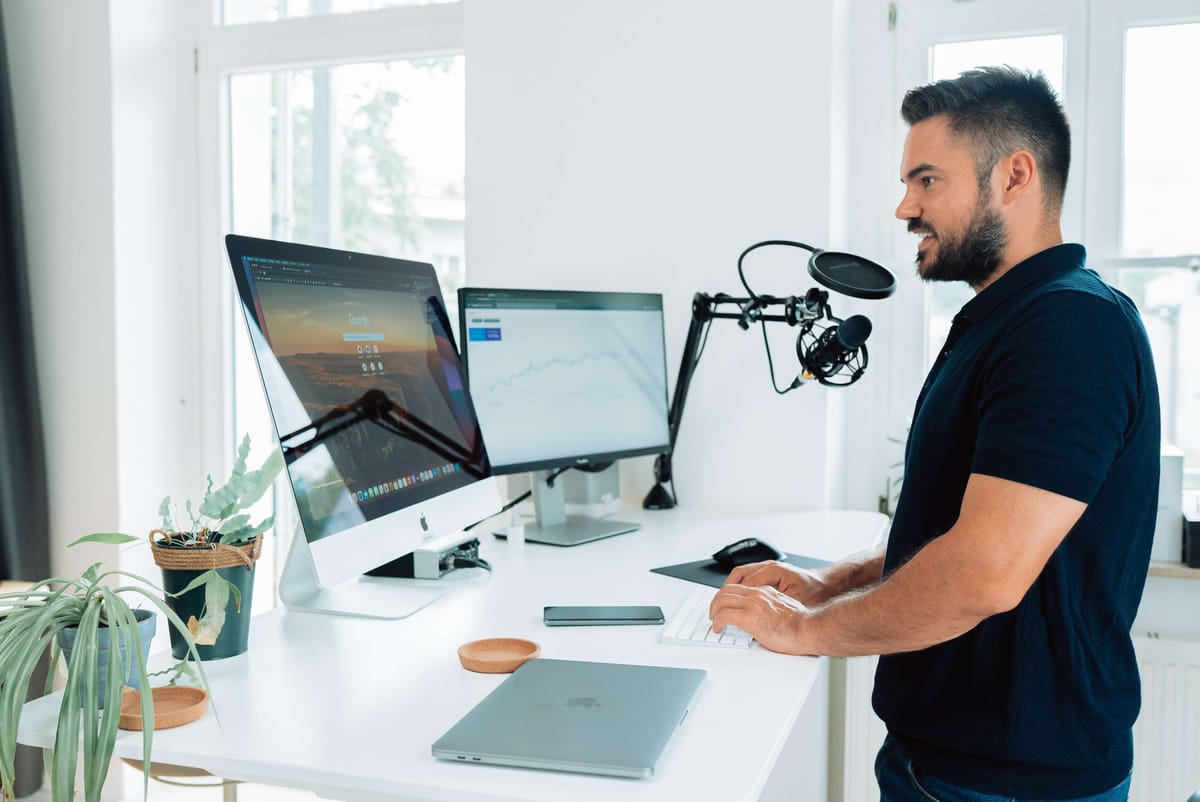Influencer marketing has been picking up momentum in recent years. It’s an effective form of marketing that has the potential to generate a large return on investment (ROI), with 89% of marketers considering influencers to offer a higher ROI than other popular marketing tactics. We already see how prevalent it is in B2C, but can it bring just as many benefits to B2B?
Yes, in fact, possibly even more.The purchase size in B2B dwarfs that of B2C, and referrals and word of mouth are critical to successful sales. And with the explosion of smaller or more niche influencers across social media, these micro-influencers can reach highly targeted segments of your audience - but more on that later.
Not every influencer is going to best represent your brand. Just because an influencer has a huge following online, doesn’t mean they’d automatically be the right choice for your company. If you’re thinking of implementing influencer marketing into your next content strategy, check out these tips for picking the right influencer for your brand.
In this article, we cover:
- The pros and cons of influencer marketing
- How to find the best influencers for your brand
- Affiliate marketing vs influencer marketing
- Influencer marketing vs traditional marketing
The pros and cons of influencer marketing
Influencer marketing taps into a major asset: engaged human voices that followers already trust. Whether macro or micro-influencers, they garner higher post engagement and conversion rates than branded content alone.
Essentially, influencers do our talking for us in an authentic way that resonates more deeply with target audiences. This allows you and your brand to expand reach into fresh, relevant markets because most follower overlap with current audiences is minimal. When strategically executed, the value exchange is well worth the boost in messaging and credibility lent by leaders in those communities.
However, the handover of creative control to influencers poses risks if not properly vetted or aligned throughout the partnership. Fake followers are everywhere, and disclosure protocols may not be upheld by all, jeopardizing your brand integrity and consumer trust.
You also tend to surrender some image control and must accept unpredictability in performance metrics. The key is choosing those who authentically engage their niche about relevant products. With tightened partnership management, your brand can leverage influencer voices for exponential returns compared to traditional media.
How to find the best influencers for your brand
Understand your target market
Before you can put a list together of potential influencers, you need to make sure you fully understand your audience base.
Your target audience needs to actually be following the influencer before you decide to collaborate, so you can ensure their content will actually reach the right people. Use hashtags on social media to search for the right kind of media content relevant to your brand. This will not only help you discover what kind of content your audience cares about but can also be a great place to start your search for influencers.

Meaningful content
Follower count is not a good metric to use to decide on what influencers to contact, you need to consider the actual content they share. Spend some time on each of the influencer’s social media platforms to get an idea of the kind of content they produce and support.
Are they producing the kind of posts you’d be happy for your brand to associate with? Also, check out the comment sections, do the posts tend to generate engagement, and does the influencer take the time to respond?
You need to know what kind of content the influencer is putting out there, whether their values align with your brand’s own, and whether their audience shares them too.
Industry credibility
When you’re exploring an influencer’s content and social posts, try and get a sense of how familiar they are with topics your brand cares about. Do they sound informed and can they demonstrate any areas of expertise on topics that matter in your industry?
Enlisting the services of someone with no knowledge of your industry or what your brand does will come across as inauthentic, and their audience will likely be confused by the partnership. No matter how strong your script or pitch, authenticity cannot be faked.
Another place you can check is an influencer’s follower list and who they follow. Check for signs of inactive followers or even fake accounts, as this could be a sign that this person would not make a great influencer to partner with. As for their followers, check for any thought leaders or publications relevant to your industry, as that’s a good sign that you’ll both be on the same page.
Engagement levels
Engagement is crucial in influencer marketing, but it needs to be the right kind of engagement for your brand. Check out an influencer’s most popular posts and compare them to the ones that don’t have the same engagement levels. Are there any notable differences between these types of posts? Do they get more or less engagement from sponsored posts? How does their audience base react to sponsored posts?
These things will all indicate an influencer’s ability to connect with their audience, and by checking any sponsored posts you’ll be able to see whether they can share your brand’s beliefs in a way that seems genuine.
Try and seek out influencers that get lots of engagement on sponsored posts, or posts that share your brand values. But make sure you check their followers to ensure they’re not all bots. Their engagement should include comments and responses to CTAs, not just a load of likes.
Relevant audience
Of course, you’ll want an influencer with an audience that overlaps with your own, but not completely. The whole point of working with an influencer is to further expand your reach, so look for influencers whose followers are likely to want to learn more about your brand, as opposed to those who may already know about it.
Check out the comment sections on their posts to get a sense of their reactions to branded content and to see what kind of community they’re building. Not all reactions and comments on an influencer’s posts will be positive, so make sure anyone you’re working with doesn’t bring in lots of negative reactions to their posts promoting brands.
However, you’re unlikely to find any influencers with wholly positive feedback and comments, so look out for those willing to engage with criticisms and weed out unconstructive comments. Keep an eye on whether their audience appears to be growing or whether they have plateaued, as this can help you consider what kind of future reach they will likely have and if a partnership is worth it.
Micro-influencers
Micro-influencer marketing is something we’ve discussed before in our blog about the top B2B marketing trends in 2023/24, and it’s no wonder. These days, people have wised up to advertising and they hate to feel like they’re being marketed at. That’s why many brands are abandoning the bigger influencers with millions of followers in favor of micro-influencers, those with a much smaller, yet very dedicated following.
These influencers have the advantage that they can deliver a truly authentic message to their trusted audience. B2B brands can benefit from these intimate relationships micro-influencers have with their audience, as they’re much less likely to receive negative reactions to their branded posts.
You could have a much better ROI by going with a micro-influencer over a top influencer, as they can use their authentic relationship with their invested audience to share your message in a way that won’t be immediately rejected.

Affiliate marketing vs influencer marketing
It’s easy to get affiliate marketing and influencer marketing confused as both leverage content creators to promote products. However, affiliate marketing is very conversion-driven while influencer marketing focuses more on exposure and amplification through public figures that followers relate with.
One thing we will say is that it isn’t an either/or situation. Affiliate marketing and influencer marketing can complement each other as part of an integrated digital marketing strategy.
Let’s take a look at some of their differences:
Influencer marketing vs traditional marketing
Now, let’s add traditional marketing to the mix. What are the main differences here? Well…
Final thoughts
Working with influencers can be a great way to raise brand awareness and generate new leads. Once you’ve vetted some potential influencers, it’s time to reach out. Follow and engage with them on their social platforms, and when you’re ready, you can send out a compelling proposal explaining why you’re reaching out, what you can offer, and how they can take the conversation forward.
Want to find out more about recruiting influencers in B2B? Join the Revenue Marketing Alliance community!



